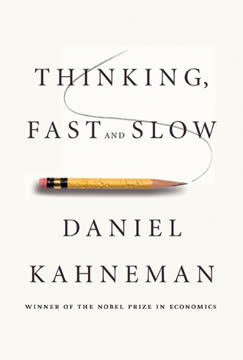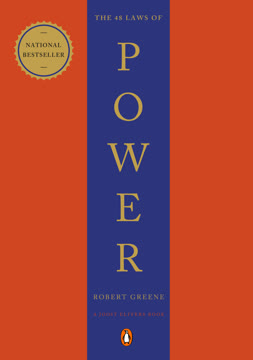重点摘要
不在乎的微妙艺术:拥抱消极
对更多积极体验的渴望本身就是一种消极体验。而,接受自己的消极体验本身就是一种积极体验。
反直觉的方法。 追求幸福和积极性往往会导致更多的不满和消极。通过不断寻求积极体验,我们无意中创造了更多的消极体验。关键在于拥抱消极体验和情绪,接受它们是生活的一部分。
实际应用。 与其不断追求幸福,不如少在乎琐碎的事情。优先考虑对你真正重要的事情,并接受这些选择的消极方面。这种方法通过减少焦虑和增加韧性,带来更充实的生活。
- 少在乎的领域:他人的意见、社会期望、小的不便
- 多在乎的领域:个人价值观、有意义的关系、长期目标
幸福是个问题:解决它
通往幸福的道路充满了垃圾堆和羞耻。
重新定义幸福。 幸福不是一个目的地,而是一个不断解决问题的过程。接受这种心态可以让你对幸福有一个更现实和可持续的方法。
解决问题的方法。 与其追求无问题的生活,不如专注于解决更好的问题。这种视角的转变会带来个人成长和目标感。
- 更好的问题例子:
- 如何改善有意义的关系
- 如何为社会做出贡献
- 如何发展有价值的技能
接受消极情绪。 认识到痛苦、挣扎和失败是充实生活的组成部分。通过接受这些体验,你可以将它们作为个人发展的催化剂,获得更深层次的满足感。
你并不特别:接受平庸
自我价值的真正衡量标准不是一个人对其积极体验的感受,而是对其消极体验的感受。
特权泛滥。 现代社会对卓越的强调导致了广泛的特权和自恋。这种心态创造了不切实际的期望和持续的失望。
拥抱平庸。 接受你在大多数生活领域并不特别或卓越可以解放你。它让你可以专注于个人成长和有意义的追求,而不必背负不切实际的期望。
- 接受平庸的好处:
- 减少焦虑和压力
- 增加对个人改进的关注
- 更加欣赏小成就
重新定义自我价值。 与其将自我价值建立在成就或积极体验上,不如专注于你如何应对生活的挑战和消极体验。这种方法培养了韧性和个人成长。
痛苦的价值:选择你的挣扎
你是谁取决于你愿意为之奋斗的东西。
不可避免的痛苦。 痛苦是生活中不可避免的一部分。关键不是消除痛苦,而是选择哪些挣扎值得为你的价值观和目标而忍受。
有意识地选择挣扎。 确定你愿意在生活中忍受困难和挑战的领域。这些选择定义了你的价值观并塑造了你的身份。
- 值得的挣扎例子:
- 建立有意义的职业
- 维持健康的关系
- 追求个人成长和学习
通过逆境成长。 拥抱正确类型的痛苦会带来个人发展、增加韧性和更深层次的满足感。通过有意识地选择你的挣扎,你可以掌控自己的人生方向。
你总是在选择:承担责任
我们总是在选择,无论我们是否意识到这一点。总是。
持续的决策。 生活的每一刻都涉及选择,即使我们没有意识到这一点。认识到这一事实可以让我们掌控自己的生活。
责任与过错。 理解在某种情况下承担责任和承担过错之间的区别。虽然你可能不是所有事情的过错,但你总是对自己的反应负责。
- 需要承担责任的生活领域:
- 情绪反应
- 事件的解释
- 行动和决策
通过责任获得力量。 通过接受对生活各个方面的责任,你获得了塑造自己体验和结果的力量。这种心态带来了更大的个人成长和生活满意度。
你对一切都错了:拥抱不确定性
威胁你身份的东西越多,你就越会避免它。
确定性作为障碍。 相信我们对自己和世界的一切都了如指掌会阻碍个人成长和学习。拥抱不确定性可以打开新的可能性和视角。
挑战你的信念。 定期质疑你对自己和世界的假设和信念。这种做法会带来持续的学习和个人发展。
- 问自己的一些问题:
- “如果我错了怎么办?”
- “如果这个信念是错误的,我的生活会怎样改变?”
- “有什么证据与我当前的观点相矛盾?”
通过不确定性成长。 通过接受你可能对许多事情都错了,你为新想法、体验和个人成长创造了空间。这种心态培养了谦逊和持续改进。
失败是前进的方式:采取行动
行动不仅是动机的结果,也是动机的原因。
行动-动机循环。 与其等待动机来行动,不如理解采取行动往往会产生动机。这种视角打破了拖延和不作为的循环。
拥抱失败。 认识到失败是学习和成长过程中的一个重要部分。通过将失败重新定义为通向成功的垫脚石,你可以克服常常阻碍行动的恐惧。
- 拥抱失败的好处:
- 加速学习
- 增加韧性
- 更愿意冒险
“做点什么”原则。 当面临挑战或目标时,专注于采取任何行动,无论多么微小。这种方法建立了动力,往往会带来意想不到的解决方案和机会。
说“不”的重要性:拒绝替代选择
要重视X,我们必须拒绝非X。
选择性承诺。 真正的自由和满足来自于对特定价值观、关系和目标的承诺。这需要拒绝那些不符合你所选优先事项的替代选择。
关系中的界限。 在所有关系中建立和维护健康的界限。这种做法培养了相互尊重、信任和更深层次的联系。
- 健康界限的关键方面:
- 清晰地传达需求和限制
- 必要时愿意说“不”
- 尊重他人的界限
通过拒绝获得专注。 通过拒绝不符合你价值观的机会和体验,你为更深入地参与真正重要的事情创造了空间。这种专注的方法带来了更大的满意度和在所选领域的成功。
...然后你死了:思考死亡
唯一能让你对死亡感到舒适的方法是理解并看到自己是比自己更大的东西。
死亡作为动机。 定期思考自己的死亡可以让你清楚地知道什么是真正重要的。这种视角有助于优先考虑有意义的体验和关系,而不是琐碎的担忧。
遗产心态。 考虑你希望如何被记住以及你希望对世界产生的影响。这种方法可以引导你的决策和行动走向更有意义和充实的追求。
- 要考虑的问题:
- “如果我明天死了,我会后悔没有做什么?”
- “我如何能积极影响他人的生活?”
- “我希望体现和传递什么价值观?”
超越自我重要性。 通过认识到你在更大的生活和人类历史背景中的位置,你可以放下琐碎的担忧,专注于真正重要的事情。这种视角培养了谦逊、感恩和目标感。
最后更新日期:
FAQ
What's "The Subtle Art of Not Giving a F*ck" about?
- Core Message: The book by Mark Manson is about focusing on what truly matters in life by choosing what to care about and what to let go of.
- Counterintuitive Approach: It challenges the conventional self-help advice of always being positive and instead suggests embracing life's struggles and limitations.
- Philosophical Insights: Manson uses philosophical concepts to argue that accepting our limitations and failures can lead to a more meaningful and fulfilling life.
Why should I read "The Subtle Art of Not Giving a F*ck"?
- Practical Advice: The book offers practical advice on how to prioritize your values and focus on what truly matters.
- Relatable Examples: Manson uses relatable anecdotes and examples to illustrate his points, making complex ideas accessible.
- Refreshing Perspective: It provides a refreshing perspective on self-improvement by encouraging readers to embrace their flaws and limitations.
What are the key takeaways of "The Subtle Art of Not Giving a F*ck"?
- Choose Your F*cks Wisely: Focus on what truly matters and let go of the rest.
- Embrace Failure: Accept that failure is a part of life and use it as a tool for growth.
- Value-Based Living: Live according to your values, not societal expectations or superficial goals.
What is the "Feedback Loop from Hell" in "The Subtle Art of Not Giving a F*ck"?
- Cycle of Anxiety: It's a cycle where worrying about your problems leads to more anxiety, creating a loop of negative emotions.
- Self-Perpetuating: The loop perpetuates itself as worrying about being anxious makes you more anxious.
- Breaking the Loop: Manson suggests breaking the loop by accepting negative emotions and not giving a f*ck about them.
How does Mark Manson define "The Subtle Art of Not Giving a F*ck"?
- Selective Caring: It's about choosing what to care about and what to ignore, focusing only on what truly matters.
- Prioritization: It involves prioritizing your values and letting go of superficial concerns.
- Emotional Resilience: By not giving a f*ck about trivial matters, you build emotional resilience and focus on meaningful challenges.
What is the "Backwards Law" mentioned in "The Subtle Art of Not Giving a F*ck"?
- Paradoxical Insight: The Backwards Law suggests that the more you pursue feeling better all the time, the less satisfied you become.
- Acceptance of Negativity: Accepting negative experiences can lead to positive outcomes, as it reduces the pressure to always be happy.
- Philosophical Roots: The concept is rooted in philosophical ideas that emphasize the importance of embracing life's struggles.
What does Mark Manson mean by "You Are Not Special"?
- Challenging Entitlement: Manson argues against the cultural narrative that everyone is exceptional, which can lead to entitlement and unrealistic expectations.
- Embrace Mediocrity: Accepting that you are average in most things can lead to a more grounded and fulfilling life.
- Focus on Growth: By letting go of the need to be special, you can focus on personal growth and meaningful achievements.
How does "The Subtle Art of Not Giving a F*ck" address the concept of values?
- Importance of Values: Manson emphasizes that our values determine the quality of our lives and the nature of our problems.
- Good vs. Bad Values: Good values are reality-based, socially constructive, and controllable, while bad values are superstitious, socially destructive, and uncontrollable.
- Value-Based Decisions: Making decisions based on healthy values leads to better life outcomes and personal satisfaction.
What is the "Do Something" Principle in "The Subtle Art of Not Giving a F*ck"?
- Action Over Inaction: The principle suggests that action can lead to motivation and inspiration, rather than waiting for motivation to act.
- Breaking Procrastination: By doing something, even if small, you can break the cycle of procrastination and start making progress.
- Self-Generated Motivation: Taking action creates a feedback loop that generates its own motivation and inspiration.
What role does failure play in "The Subtle Art of Not Giving a F*ck"?
- Failure as a Teacher: Manson views failure as an essential part of growth and learning.
- Redefining Success: Success is not the absence of failure but the willingness to fail and learn from it.
- Embrace Discomfort: By embracing failure, you become more resilient and open to new opportunities.
How does Mark Manson suggest building trust in relationships?
- Honesty and Boundaries: Trust is built through honesty and setting clear boundaries in relationships.
- Conflict as Necessary: Conflict is necessary for trust, as it shows who is there for you unconditionally.
- Rebuilding Trust: When trust is broken, it can be rebuilt through admission of faults and consistent improved behavior.
What are the best quotes from "The Subtle Art of Not Giving a F*ck" and what do they mean?
- "The desire for more positive experience is itself a negative experience." This highlights the paradox that constantly seeking positivity can lead to dissatisfaction.
- "You are going to die one day." This serves as a reminder to focus on what truly matters and not get caught up in trivial concerns.
- "To not give a f*ck is to stare down life’s most terrifying and difficult challenges and still take action." It emphasizes the importance of courage and resilience in the face of adversity.
评论
读者们赞赏曼森对自助的直言不讳和清新观点,欣赏他能够打破通常以积极性为主的建议。许多人发现这本书的反直觉方法令人耳目一新,甚至改变了他们的生活。然而,一些评论家认为过多的粗俗语言令人分心,且观点缺乏原创性。总体而言,这本书的不寻常智慧和直截了当的表达方式使其成为一本两极分化但对许多寻求不同个人成长视角的人来说具有影响力的读物。
Similar Books















